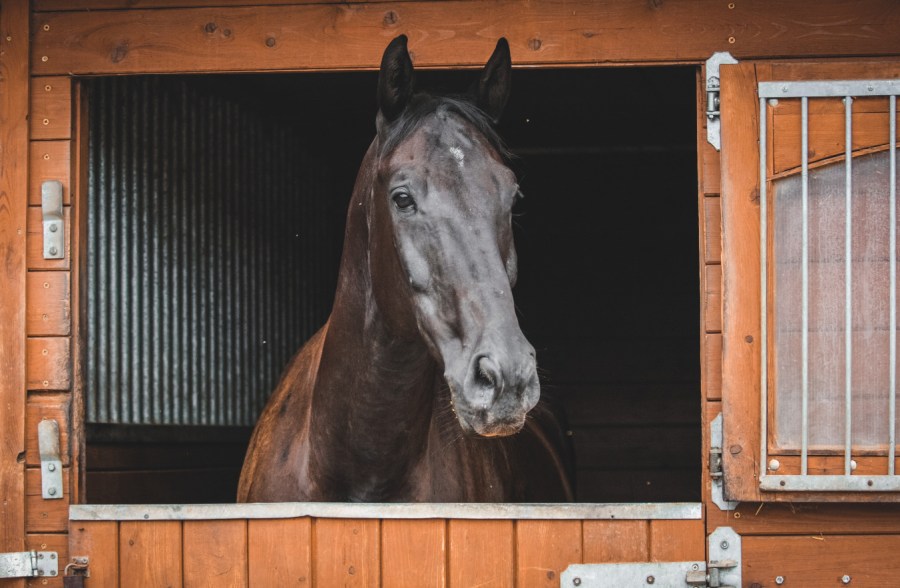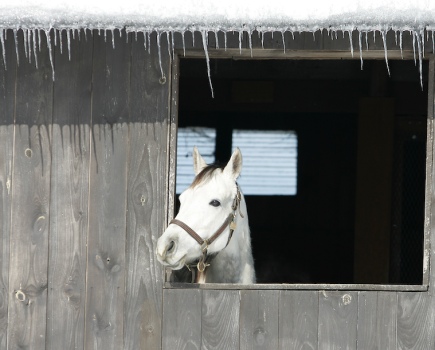According to Dr Ben Sykes, associate professor in equine internal medicine at Massey University in New Zealand and a vet for more than 20 years, the time of day you feed and ride your horse is very important when it comes to managing the symptoms of ulcers in horses.
Once thought of as a condition that mostly affected racehorses and high-performance horses (between 80% and 100% of horses in training), vets and researchers are now increasingly seeing equine gastric ulcer syndrome (EGUS) in everyday horses and ponies (up to 60%).
In fact, gastric ulcers is one of the top reasons for owners making a claim on their horse health insurance. Data from SEIB Insurance Brokers shows that the average cost of a claim for digestive problems was £2,459 — and 59% of those claims were related to symptoms of ulcers in horses.
Two syndromes
There are two types of gastric ulceration: squamous and glandular, both of which are diagnosed and treated separately.
Research has also shown that there are two distinct gastric syndromes in horses, one affected by intensity of exercise and the other by the amount. In short, intensity of exercise influences squamous disease, whereas the amount of exercise influences glandular disease.
Squamous disease
Primary squamous ulceration occurs as a result of acid damage to the non-glandular lining in the top portion of the horse’s stomach. Causes include intense exercise, high concentrate/low forage diets, starvation, water restriction, and overuse of electrolytes.
Feeding strategies used for managing squamous ulceration include ensuring horses have access to a high fibre diet ad lib and that they actually eat it (more on this below).
Feeding concentrate feeds isn’t a problem in itself, as long as they are fed in conjunction with plenty of fibre and the amount of non-structural carbohydrate (sugar and starch) in the feed is minimised.
Exercise is also an important factor for squamous ulcers. When a horse exercises acid is pushed up onto the squamous mucosa, so the longer the horse exercises the more damage is done.
Over the course of a week, the total number of minutes a horse spends at trot, canter or gallop will contribute to the risk of squamous disease.
Glandular disease
The exact causes of glandular ulcers in the glandular mucosa (bottom portion of the stomach) remain unclear, although one theory is that there is a failure in normal defence mechanisms against the acid. Exercise is also significant in relation to glandular ulcers, but for these ulcers it’s the number of days exercised per week, not the intensity or duration that is relevant.
In one study, showjumpers exercised six or seven days a week were found to be three-and-a-half times more likely to have glandular disease than horses exercising five days or less per week. A similar study looking at racehorses found that horses working five or more days had a 10-fold increase in the risk of glandular disease when compared with horses exercising four or less days per week.
This shows that rest days are important, and the current recommendation is that horses should have a minimum of two, ideally three, rest days built into their weekly routine. During training periods, it is ideally one day on and one day off, and the exercise should focus on quality rather than quantity.
When to exercise a horse with gastric ulcers
It’s also a good idea to feed a small haynet, ideally alfalfa hay, or a fibre-based hard feed while grooming and tacking up to buffer the stomach from acid during exercise. Exercising in the afternoon rather than the morning is ideal as this is when the horse is more likely to have been eating and have food in his stomach to buffer the gastric acidity.
Most horses don’t eat in the early hours of the morning because they are resting and sleeping, so the morning means they may have less food in their stomachs, increasing their risk of squamous disease. The amount of chewing is also a factor — high-fibre chaffs and hay encourage more saliva production than grain or concentrate meals, which buffers acid.
Horses with glandular disease have a more pronounced cortisol response to stress testing and behavioural stress is an important contributor to glandular disease. For this reason, management includes trying to reduce daily stress, including by allowing co-habitation with other horses — without rugs on to enable mutual grooming — keeping handlers and riders consistent, and allowing an expression of natural behaviours, as well as ensuring an enriched environment.
Ad-lib forage for horses with symptoms of ulcers
Ad-lib forage is effective only if horses are actually eating it. Horses should consume a minimum of 1% of their bodyweight per day in roughage, and ideally 2% depending on their caloric needs. Large periods of time (six hours or more) without eating can considerably lower the intra-gastric pH and increase the risk of squamous ulceration due to acid damage.
Placing several piles of hay in the field or haynets in the stable will encourage the horse’s natural feeding pattern of moving while grazing and entice them to eat more for longer, especially overnight. Cafeteria-style feeding is a good way to encourage horses to trickle feed little and often while stabled.
Main image: copyright Shutterstock








